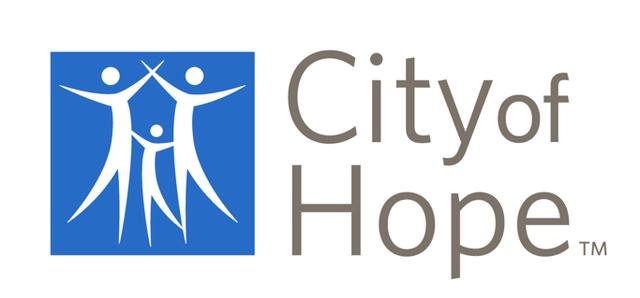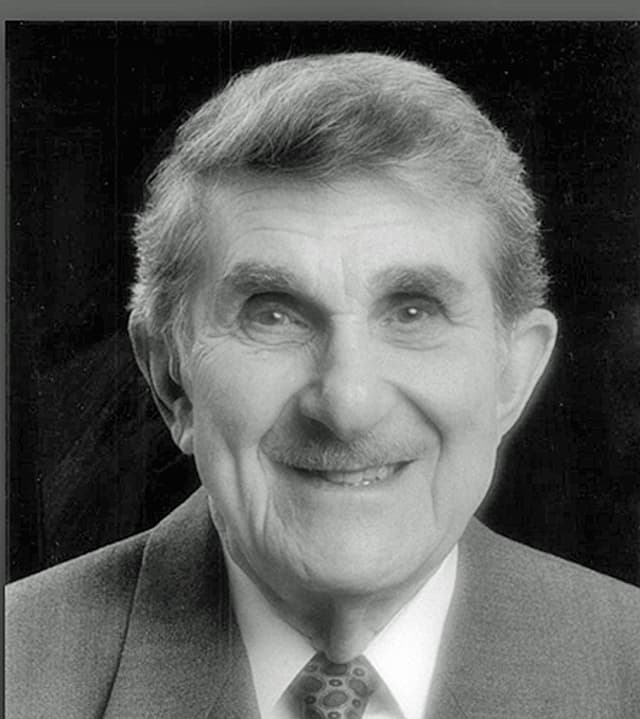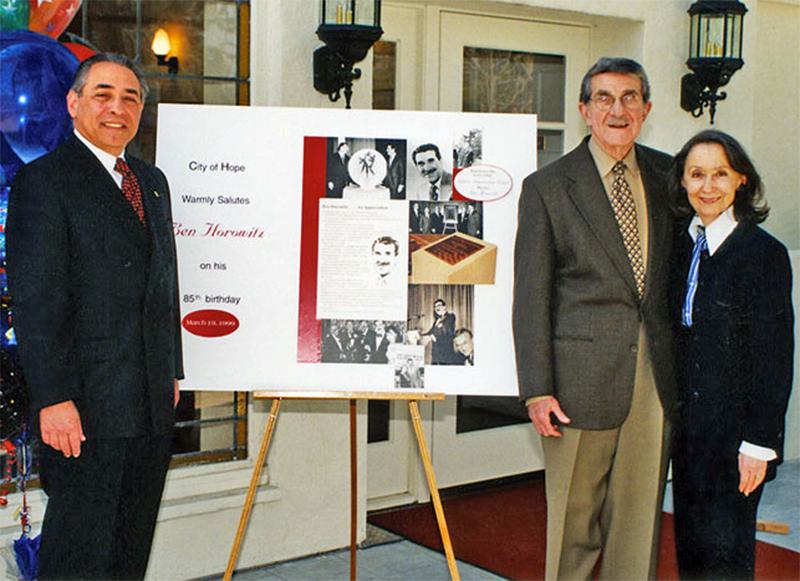Ben Horowitz of the City of Hope
- Written by
- Rich Fox
- Added
- October 08, 2014
SOFII’s new series, The most brilliant fundraiser I ever met

Described by Rich Fox
In this, the first in a new SOFII occasional series, veteran fundraiser Rich Fox describes the one fundraiser who most influenced his career and outlines some of the lessons he’s learned.
‘Who knows whom and who asks whom,’ he would often say. ‘All of fundraising comes down to just those two phrases.’ With those few words, the most brilliant fundraiser I have ever known would sum up his fundraising philosophy.

He was Ben Horowitz of the City of Hope… my very first boss at a nonprofit organisation. I first met him 39 years ago when I became his executive assistant… and I have never known a better fundraising mind before or since.
Ben began as a fundraiser for the City of Hope in the 1940s, quickly became its director of development, then served as its CEO for 32 years and finished his long association with the organisation as a member of its board of directors. He died in 2010 at the age of 96 and left a legacy of enormous proportions.
When Ben came to the City of Hope it was a sleepy little tuberculosis recovery facility in the Southern California desert. Founded in 1913, when Ben became its CEO in 1953 it had an annual budget of just $600,000. When he retired to the board in 1985 its annual budget was over $100 million, it was on the way to launching what would become a $1 billion capital campaign and it had become a world-renowned comprehensive cancer centre and medical research institute.
So, how did he do it? What made him so brilliant? The answer is simple: Ben was an innovator.
He began with just a simple fundraising philosophy: through just one person who really cares about the organisation you could raise all the money you need by tapping into that one person’s already existing business, family and social networks. Ben created a myriad of ways to access those networks.
As an example, He is often credited with creating the ‘testimonial dinner’. By honouring an individual with a network of wealthy individuals and, or, companies that would be inclined to support any worthy cause to which the honouree would direct them, Ben was able to raise literally a million dollars through just one event. And most of this money came from people who had never before even heard of the City of Hope.
He would then also use that honouree to access the honouree for the following year’s dinner and would have the new honouree in place by the end of the prior year’s dinner.
And, then he would create an industry group in each major city in the US to hold its own testimonial dinner every year.
While I was at the City of Hope we were holding 85 such dinners every year.

His next innovation was ‘letters to accounts payable’. For those people who would not consent to be honoured at a testimonial dinner, or for those with a somewhat less robust network to involve, Ben would convince them to allow the City of Hope to send a letter to his, or her, company’s list of accounts payable.
Ben rightly reasoned that if you were an important customer to someone it would be very difficult for that person to say no when you sent him, or her, a request, on your company letterhead, asking him to join you in supporting a charitable cause which was important to you. To maximize the size of the gifts he would determine the amount requested by rating the value of your business to the prospect, and would include a return envelope addressed back to you.
Not surprisingly, it raised a great deal of money.
Among his many other innovations were:
- Tribute envelopes
Return envelopes that could be used by a donor who gives small amounts to honour or remember a friend or relative. When a tribute gift came in, we sent a card acknowledging the tribute to the person designated by the donor. A new tribute envelope was included with every gift acknowledgement. Though Ben didn’t invent this, he used it to perfection and raised over $500,000 annually this way.
- Fundraising chapters named in honour of people
Ben found people would regularly use their personal networks on behalf of the City of Hope in order to honour a loved one’s name or memory. By the time I left we had over 500 chapters, raising many millions of dollars each year.
- Naming gifts
Ben found that people loved to see their own name or the name of a loved one displayed prominently at the medical centre. He would say that if there was a wall, a room, a piece of equipment, or even a beam we should find a donor and put a name on it. In fact, he built a special free-standing wall outside to hold even more names, calling it Heritage Park.
- Board of trustees
When he found he had a board of directors that was not a strong fundraising board, Ben created this separate non-governing board of top business leaders, which he named the board of trustees. Members would occasionally be asked, individually, to help the City of Hope gain access to their own networks, with no other responsibility. Ben found that they loved to see each other’s homes, so members were invited every three months to attend an inspirational presentation at the home of another trustee.
- Research fellowships
To inspire dinner honourees to maximize the amount of money raised through their testimonial, Ben would create a research fellowship supporting a specific medical researcher, promising that the fellowship would be named in all research publications.
Ben was also a genius at messaging and branding. Realising that people elsewhere in the country would be reluctant to support a local Duarte, California hospital, Ben created the concept of a ‘pilot medical centre’, promising that the City of Hope would pioneer medical research and new clinical techniques and would then share its findings worldwide.
With this in mind he came up with perhaps his most brilliant fundraising idea of all.
In the 1970s, two of our researchers were working on synthesising human insulin. To support this research, Ben obtained financial support from the then new, and now multi-billion- dollar biotech firm, Genentech.
The deal was that Genentech would provide not only a research grant, but also a share of all potential royalties resulting from the research. As a result, in 2008, the City of Hope was awarded $300,000,000 in royalties.
Ben also welcomed innovation from his fundraising staff. When I would ask him why he did not insist that our fundraisers do what he, Ben, knew would work best, he would tell me, ‘Rich, I would rather have them do enthusiastically what they think will work than do half-heartedly what you and I think will work better.’
As one last note, in 1975, Ben said to me... ‘Wills and bequests and planned giving are the future of fundraising and we need to get into it now.’
So, in that year I went about setting up one of the earliest legacy marketing programmes in the USA. I am told that in the following years legacy gifts have brought in many hundreds of millions of dollars to the City of Hope.
And, as part of his legacy, I took Ben’s advice on planned giving marketing to heart personally, devoting much of my consulting practice today to what Ben so presciently saw back then as the future of fundraising: legacy marketing.
Ben Horowitz, a true giant, and the most brilliant fundraiser I have ever met.
Rich Fox is chairman and CEO of Rich Fox & Associates, Inc, in Carmel Valley, California, USA.
SOFII thinks there is mileage in the concept started by Rich Fox. So we want to start a new series called, quite simply, ‘the most brilliant fundraiser I have ever met’. Our challenge to all SOFII readers is, who is the fundraiser, living or dead, who most inspired you? And can you tell her or his story in around 1,000 words, with a picture or two appropriately captioned? That way you’ll get your chance to share the lessons you have learned and to honour one of our sector’s great influencers.
Please in the first instance send your story to carolina@sofii.org. Thank you.

















